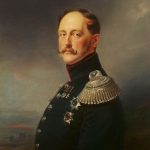Despised he was by most historians, many journalists, more idealists, and especially pacifists, Douglas Haig was born in 1861. He served under Kitchener at the Battle of Omdurman in 1898, and continued successful fighting in the colonial South African War.
The Great War (1914 – 18) began with Haig’s criticism of French’s conduct of the war in command of the British Expeditionary Force. He intrigued, and had French replaced by himself, a manoeuvre that got him noticed by the newspapers. It was December, 1915.
According to biographers and contemporary diarists, Haig kept himself aloof, and was severely self-disciplined. Certainly his junior commanders felt in awe of him, as he almost never discussed tactics or strategy with them, making himself disagreeable if they tried. The fact that he was a sincerely religious Roman Catholic might have produced this trait, in that Haig believed he had God’s support, and was therefore right. The only way to beat the enemy, he said, was to be on the offensive, and thus beat him down. This was the way colonial wars were fought
Most military historians agree that it was this almost cretinous colonial conviction of Haig’s that made him order dubious frontal attacks, causing the loss of almost numberless men. On the first day of the Battle of the Somme (June- November 1916) there were 56,000 casualties. By October the battlefield had been replaced by a deep sea of mud stinking of blood and gunpowder; obviously the offensive had failed but Haig, optimistic as usual, persisted in continuing the ‘assault’. Even more lives were wasted. The British Expeditionary Force suffered 400,000 casualties for a gain of just eight miles.
Back in London the Prime Minister David Lloyd George was horrified by these statistics and in February 1917 he moved Haig under the (temporary) command of the French Commander-in-chief, Nivelle. This was also disastrous, as Nivell’s offensive was a disaster and mutinies took place in the French forces. Haig was put in command again, this time to strike north-east from the Ypres salient on the coast of Belgium.
The third battle of Ypres (known as ‘Wipers’ by the British Tommy) is also known as ‘Passchendaele’ (July – November 1917). It simply repeated the experience of the Somme. The slaughter continued, this time with the BEF losing 300,000 for a gain of five miles. And these five miles were soon to be lost again during the Ludendorff Offensive. This was first directed against Haig’s forces in March, 1918, and only held up by extraordinary bravery and desperate resistance at Arras.
Then Marshal Foch was appointed generalissimo, supported by Haig himself. Foch prevented the BEF being cut off from the main French army. It was lucky for Haig that Ludendorff struck at the French line at Aisnes in May, as this gave the British time to rest and refit. By now the Americans were in the Great War (they had entered in 1917) and on 8 August Haig began a counter-offensive with French and US allies which recovered most of the spring losses. The great advance they made was able to continue until the Armistice of 11 November.
Douglas Haig became the first Earl Haig. After the War he gave up most of his time to looking after the welfare of ex-soldiers, which has somewhat cynically been described as his conscience at work. He had a great deal to do with the formation of The British Legion.
Earl Haig has been severely criticised by the groups mentioned at the beginning of this piece, and one cannot but believe the criticism is justified. His methods might have been suitable in small colonial wars, but not in a clash of civilizations taking place in a new technological age. The worst said about him is that he ‘destroyed his own armies in pursuit of unattainable objectives.’











Leave A Comment